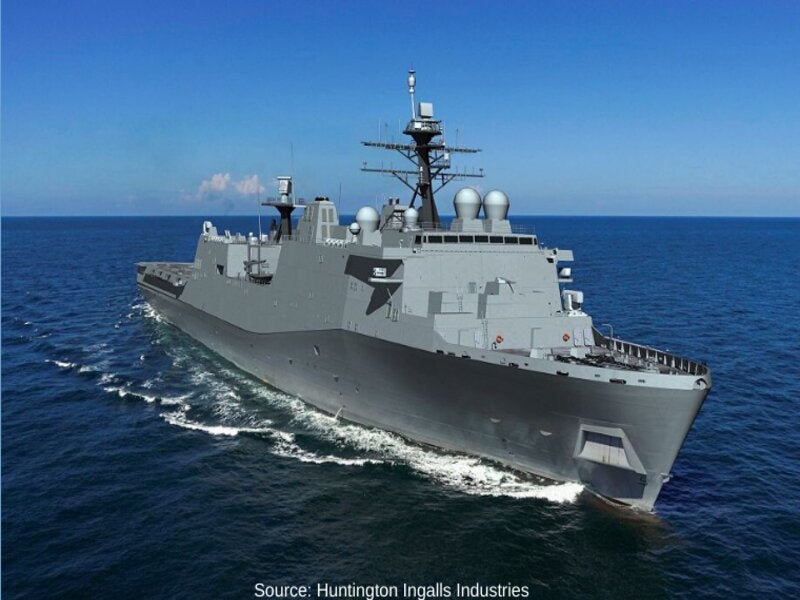
Fairbanks Morse has secured a purchase order from Huntington Ingalls Industries (HII) to build and deliver four propulsion diesel engines to power the US Navy’s Landing Platform Dock (LPD) 31 ship.
LPD 31 is the second of 13 in the LPD Flight II class of ships.
The LPD Flight II design has been modified with additional features based on the existing San Antonio-class hull.
These features included an improved flight deck, a well deck, as well as hospital facilities and defensive features.
The vessels are capable of sustaining more than 500 combat-equipped marines for up to 30 days with their vehicle and cargo capacities.
Under the contract, the company will deliver four turbocharged 16-cylinder FM | Colt-Pielstick PC 2.5 diesel engines, providing the vessel with 31MW of propulsion power.
The common rail system technology of the engines uses a high-pressure fuel header, high-pressure pumps, electronically controlled fuel delivery, an electronic governing system, and a control system to deliver optimal amount of fuel.
Set to be built at the Fairbanks Morse manufacturing facility in Beloit, the engines will be delivered to HII’ Ingalls Shipbuilding in Pascagoula, Mississippi.
Fairbanks Morse will further support the installation, testing and sea trials of the engine for the LPD 31.
Fairbanks Morse CEO George Whittier said: “We are proud to carry on our tradition of supplying the US Navy with the critical components of our fleet. We make every engine with care, knowing that our service members rely on them to perform their duty.
“The LPD Flight II ships will be a critical part of the navy’s expeditionary warfare mission set, which includes opposed landings, and we take great pride in making engines that may go in harm’s way.
“Because of the common rail fuel injection technology that goes into each engine, we are able to reduce lifetime operation and maintenance costs by increasing fuel efficiency and decreasing emissions.”



